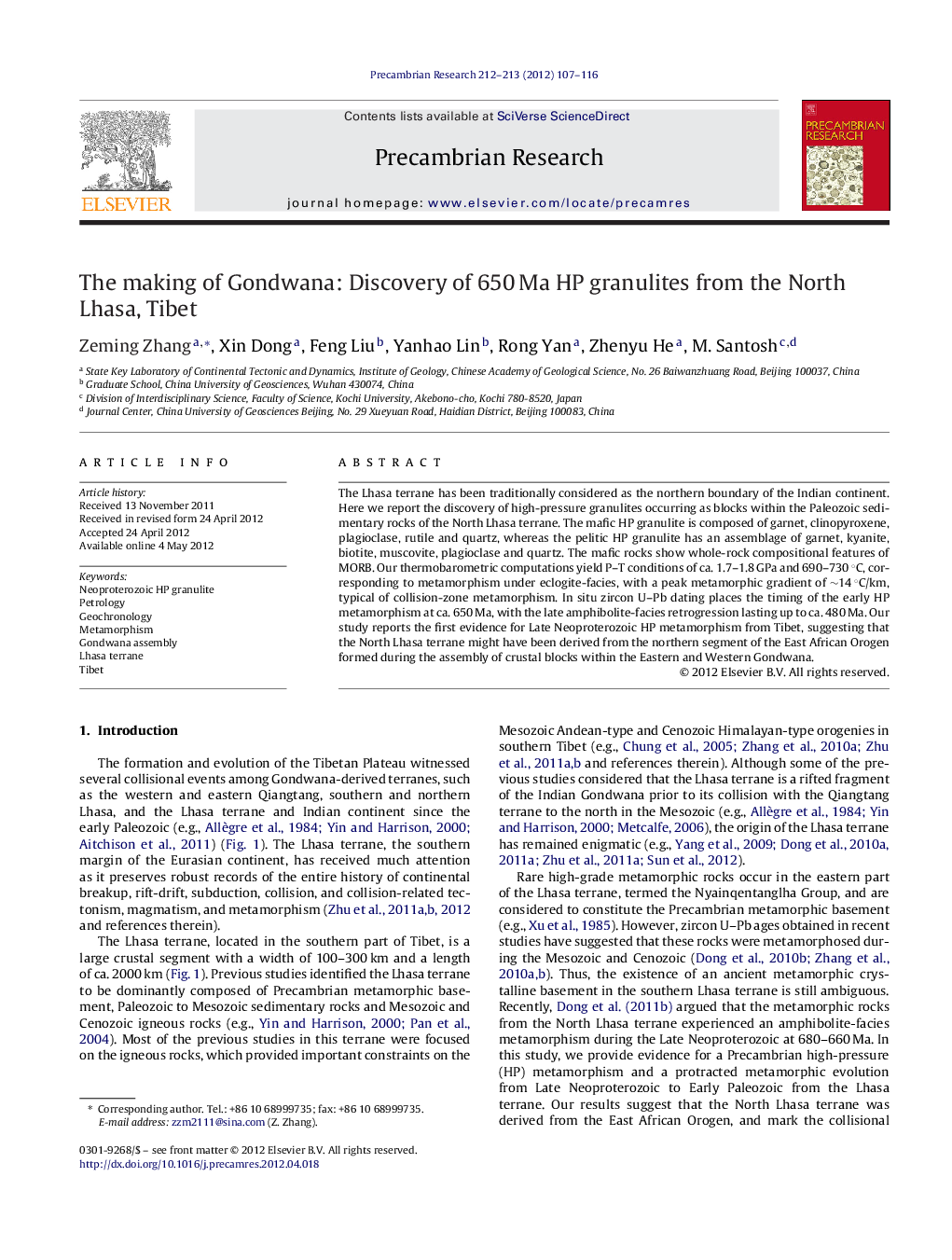| Article ID | Journal | Published Year | Pages | File Type |
|---|---|---|---|---|
| 4723536 | Precambrian Research | 2012 | 10 Pages |
The Lhasa terrane has been traditionally considered as the northern boundary of the Indian continent. Here we report the discovery of high-pressure granulites occurring as blocks within the Paleozoic sedimentary rocks of the North Lhasa terrane. The mafic HP granulite is composed of garnet, clinopyroxene, plagioclase, rutile and quartz, whereas the pelitic HP granulite has an assemblage of garnet, kyanite, biotite, muscovite, plagioclase and quartz. The mafic rocks show whole-rock compositional features of MORB. Our thermobarometric computations yield P–T conditions of ca. 1.7–1.8 GPa and 690–730 °C, corresponding to metamorphism under eclogite-facies, with a peak metamorphic gradient of ∼14 °C/km, typical of collision-zone metamorphism. In situ zircon U–Pb dating places the timing of the early HP metamorphism at ca. 650 Ma, with the late amphibolite-facies retrogression lasting up to ca. 480 Ma. Our study reports the first evidence for Late Neoproterozoic HP metamorphism from Tibet, suggesting that the North Lhasa terrane might have been derived from the northern segment of the East African Orogen formed during the assembly of crustal blocks within the Eastern and Western Gondwana.
Graphical abstractFigure optionsDownload full-size imageDownload as PowerPoint slideHighlights► The crystalline basement of Lhasa terrane consists of Neoproterozoic HP granulites. ► The basement rocks show geochemical feature of ophiolitic mafic rocks. ► The basement rocks experienced a prolonged metamorphic history from the late Paleoproterozoic and early Paleozoic. ► The North Lhasa terrane might have been derived from the northern part of EAO. ► Our study reports the first evidence for Precambrian HP metamorphism from Tibet.
